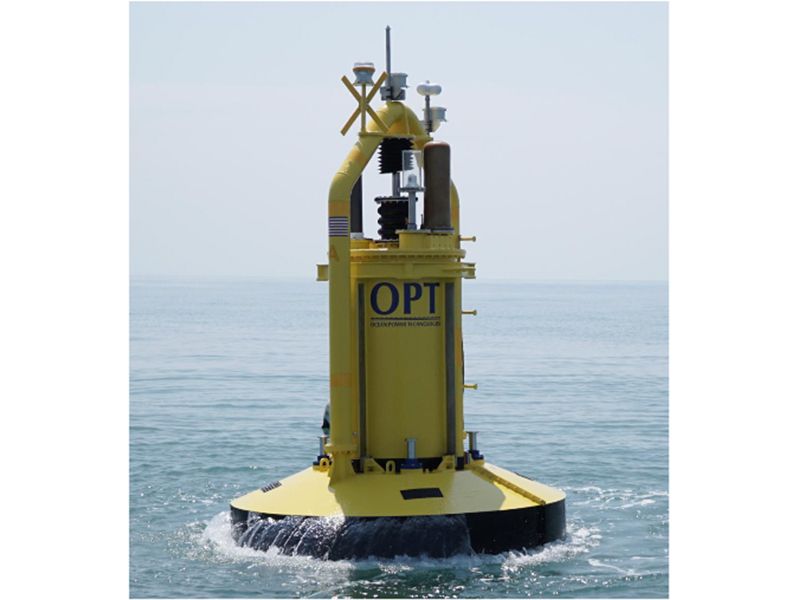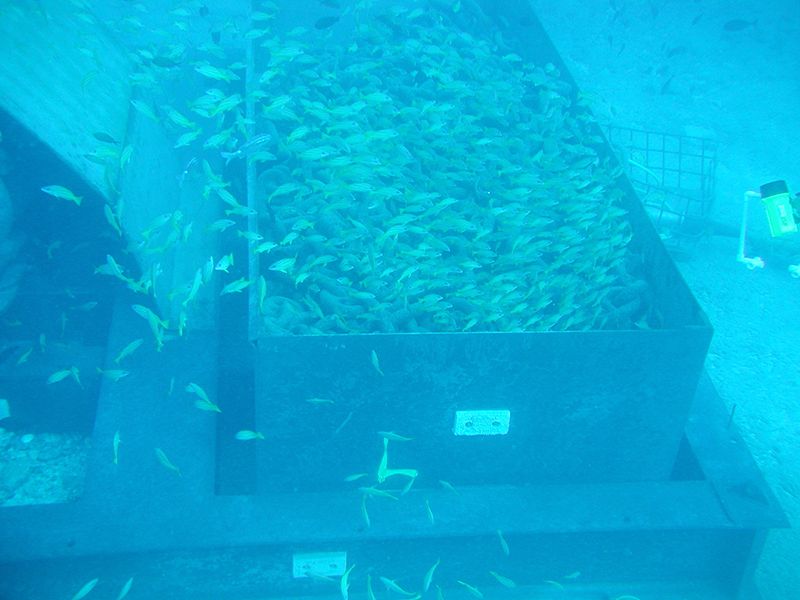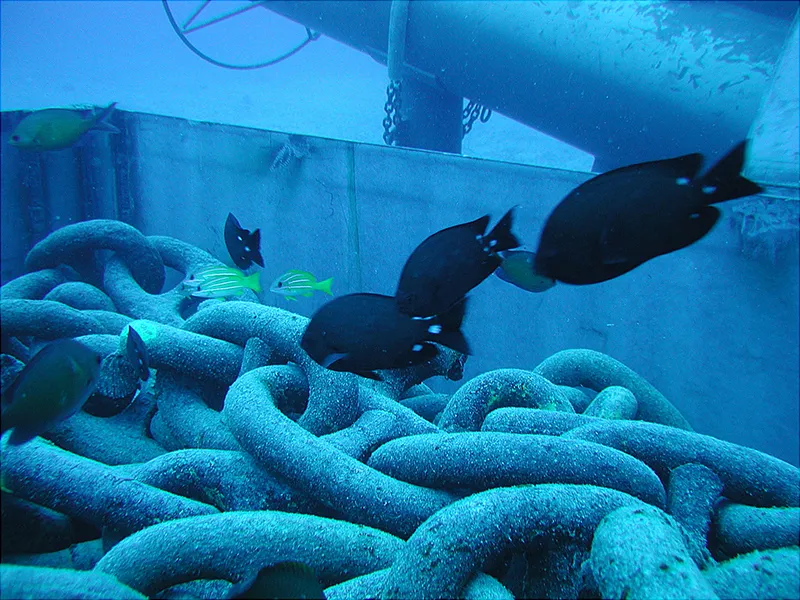Can We Capture Energy From a Hurricane?
Loaded with power, massive storms may be another conduit for renewable energy
/https://tf-cmsv2-smithsonianmag-media.s3.amazonaws.com/filer/d5/89/d58936a7-e3e2-431f-8c1b-9b0e7fdc1391/hurricane.jpg)
As destructive natural phenomena go, hurricanes are among the heavyweights. If not for the gale-force winds and resulting projectile debris, then for the massive flooding that results when one makes landfall and stalls out, a hurricane is a nasty piece of work. Just ask the residents of the coastal Carolinas and Georgia this week as they wring themselves out from Hurricane Matthew’s weekend deluge.
In terms of energy stored and released, hurricanes pack a huge punch. Your “average” tropical cyclone might release the equivalent of 600 terawatts of energy, with a quarter of a percent of that as wind; the vast majority of the energy in a hurricane is in the form of heat stored and released as water vapor condenses into rain.
So while wind is only a small part of the overall energy output of a hurricane, it still generates vast amounts of power: around 1.5 terawatts, or just over a quarter of the world’s current total electrical generating capacity of 5.25 terawatts. The wind from just one storm is a gold mine of clean energy.
But like my own childlike notion that one could solve the world’s energy problems simply by running a huge extension cord to the sun, how exactly does one go about chasing down hurricanes to harvest their energy?
The challenges are obvious. Miles wide, forming in the open ocean, with meandering tracks that rarely strike the same area of coast twice, it’s not simple or even desirable to plunk down a mobile wind farm in the path of a lumbering hurricane. Instead, some researchers are aiming for round-the-clock electricity generation systems that can withstand hurricane forces, but that can also take advantage of the increased power potential when a storm does strike.
One approach has been a rethinking of the wind turbine itself. In Japan, CNN reported on one entrepreneur’s redesign of the common fan to eliminate the vulnerable blades. Atsushi Shimizu, founder of energy startup Challenergy, built a sleek, “egg beater” style design, with vertical blades sandwiched between upper and lower platforms that is designed to withstand Japan’s violent typhoons. Able to turn in either direction but also be tightened down to regulate the turbine’s turn rate, Shimizu’s design accommodates Japan’s unpredictable wind patterns while also preventing damage caused by uncontrolled rotation.
The first field prototype was installed in Okinawa in 2016. The turbine is allegedly able to capture energy from the rotating lift forces of strong winds, known as Magnus forces, as well as straight-line winds. But Challenergy reports on its website that they do not have estimates yet for power generation and maximum sustained winds.
Conventional bladed turbines must be locked down during storms, halting energy production. Heavy storms with high winds can cause them to fail catastrophically if the lock mechanism fails, as happened with one turbine in 2011 in Ayrshire, England.
Others have designed vertical-axis wind turbines, but the familiar horizontal-axis variety with long blades remains the standard due to their affordability and efficiency.

In Miami, Arindam Gan Chowdhury runs a wind laboratory at the Florida International University’s International Hurricane Research Center. Consisting of a bank of 12 fans, each powered by a 700-horsepower motor, this “Wall of Wind” can generate tempests of up to 157 miles per hour, the equivalent of a Category 5 hurricane. Chowdhury’s research focuses primarily on mitigating wind impacts on buildings, but a recent project added a new dimension: power generation while disrupting damaging winds.
Along with FIU mechanical engineer Andres Tremante, Chowdhury devised a system of screw-like turbines that can be mounted to the entire length of a building’s eaves or gutters. Dubbed AMPS, for Aerodynamic Mitigation and Power System, the long stretches of turbines interrupt the powerful vortexes of air generated by strong winds as they strike a building and travel up and over the roofline. These vortexes are responsible for the majority of roof damage, ripping away tiles and shingles and allowing rain to enter, and even sucking roofs right off of buildings as they create an upward lift along structures’ sharp margins.
“We’re not trying to tame hurricanes,” Chowdhury says. “Reducing the wind effect on buildings is our first criteria. But as we do that, we thought, why not create something that is dynamic, which can break that wind and also turn it into a friend that produces green energy.”
His vision for the technology, which has a pending patent, is that it can be used to make individual buildings more sustainable while also reducing damage they incur from any level of storm, anywhere in the country. Though they are still running tests on the system, Chowdhury says that the turbines should even help reduce damage from winds near tornado systems (but probably not in a direct hit). And by feeding electricity either into a municipal grid or charging home battery systems similar to those that already exist for solar panels, Chowdhury says the electricity generated by a single home during a blackout-level storm could easily power a small refrigerator, cell phone, laptop and several lights for a handful of days.
“Each building needs to be as self-sufficient as possible,” he says. “People need to be ready for any kind of catastrophe, and be able to supply their own energy instead of relying on grid-generated power.”
AMPS can generate supplementary amounts of power even from the ubiquitous, five to seven mile-per-hour winds that occur day and night across the entire planet, according to Chowdhury.
Several large roofing companies have already expressed interest in the possibility of commercializing the concept, he adds, and he and his colleagues are working with architects to come up with aesthetically attractive designs that would enhance the roofline.
Hurricane winds are not powerful and damaging in and of themselves, but they also create hazards where the land meets the sea, in the form of large waves. One New Jersey-based company got to witness firsthand how its wave-energy buoys performed during 2011’s Hurricane Irene, with some promising hints that the giant waves generated by hurricanes and typhoons may one day provide boosts of power when they pass through.
Deborah Montagna, vice president of business and project development for Ocean Power Technologies, says the company’s PB3 PowerBuoys have the ability to continuously generate power to charge batteries that can store from 44 to 150 kilowatt hours. During periods of complete calm, that’s enough energy to provide power to anything it’s connected to for several days, depending on the power requirements of that item. When the battery is fully charged, excess energy is released as heat, which Montagna says marine life particularly seems to enjoy.
In 2011, when Hurricane Irene was raking up the eastern seaboard, Ocean Power’s U.S. Navy and Homeland Security partners kept asking if the company would bring in their 10,000-ton test buoy located off the New Jersey shore ahead of the storm. Nope, the company said: we want to leave it out there and see what happens.
Under normal conditions the buoy would send hourly reports on its power generation and other analytics—and it continued to do so throughout Irene.
“We kept getting complete reports on its performance, and we did generate power all through Hurricane Irene,” Montagna says. “If we had a graph, you’d be able to see a big jump in the power generation on the day of the storm. We designed it to survive the 100-year storm, but you never know when that will show up.”
The company worked with the Navy in Hawaii in 2010 to demonstrate how the buoys could be hooked into terrestrial power grids, but citing a lack of fully matured technology, the company has recently focused more on generating on-demand power for at-sea applications, such as oil rigs, research vessels or undersea monitoring equipment.
In Miami, Chowdhury says that Matthew didn’t cause any damage to buildings, but the 100 mile-an-hour winds there did knock out power to thousands. People keep testing theories to dampen or harvest hurricanes’ energy, but so far, nothing has panned out.
“I tell my students, instead of trying to play with the hurricane, why not build things that are smarter and more resilient?” he says.
/https://tf-cmsv2-smithsonianmag-media.s3.amazonaws.com/accounts/headshot/Michelle-Donahue.jpg)



/https://tf-cmsv2-smithsonianmag-media.s3.amazonaws.com/accounts/headshot/Michelle-Donahue.jpg)